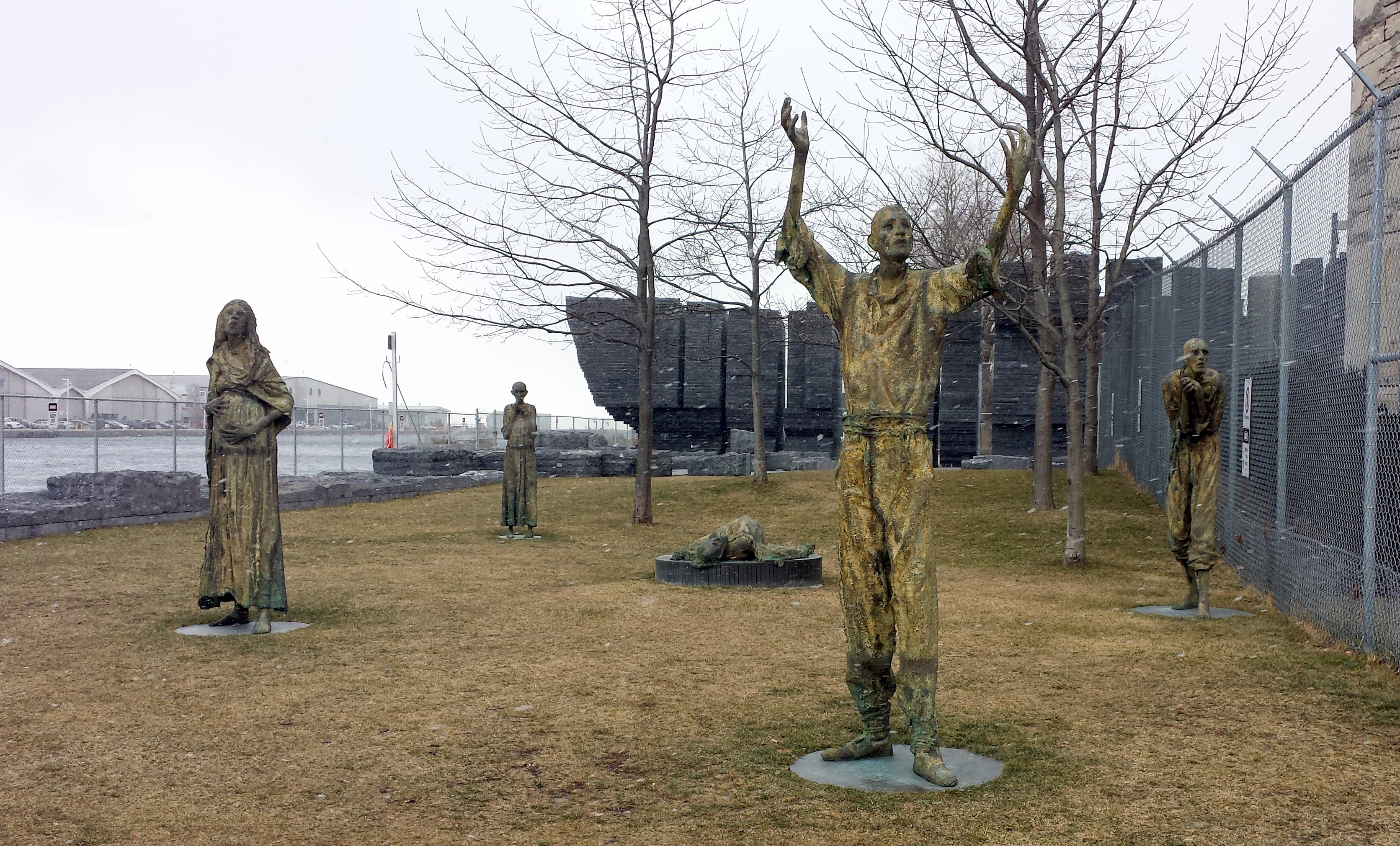
St. Patrick’s Day, also known as the Feast of Saint Patrick, has become a general celebration of Irish heritage and culture all over the world. Its global observance has largely been attributed to the Irish Diaspora. Today we highlight the profound impact of one of the greatest events in Irish history and heritage.
While Irish immigrants had already begun settling in British North America by the 1790s, the Great Irish Famine (or Great Hunger, or Irish Potato Famine) of the 1840s to 1850s heralded a massive emigration movement out of Ireland. Approximately one million people died, and millions more sought refuge around the globe. Ships carrying refugees were overcrowded and disease-ridden, providing ripe conditions for cholera and typhus to run rampant throughout the vessels. These boats became known as “coffin ships”, bringing the sick, the indigent, the dead, and survivors. Perhaps, even your ancestors.
During the spring and summer of 1847, Toronto’s population of 20,000 people swelled as almost 38,560 Irish Famine migrants arrived at the Toronto waterfront. However, their health upon arrival was so poor, that despite relief efforts, over 1,000 migrants died from illnesses and were buried in Toronto.
In Dublin, Ireland, along the north banks of the River Liffey on Customs House Quay, the statues of seven emaciated men and women silently embark on their journey to escape the blight ravaging their homeland. They stand on the departure site of the Perserverance, one of the first famine ships to depart in 1846.
Meanwhile, tucked behind the silos of the Canada Malting Company lies Ireland Park, where four bronze figures face the waters of Lake Ontario and Toronto Skyline on Éireann Quay.






Created by the Irish artist Rowan Gillespie, these statues create a historic and artistic link between the Toronto and Dublin waterfronts, memorializing the Departure and Arrival of Irish Famine migrants. Behind the Toronto statues is an impressive rock-face made from black Kilkenny limestone, evoking the stark landscape that had been left behind. Upon closer examination, the names of 675 migrants who died in Toronto have been engraved on the stones. The large limestone sculpture effectively separates Ireland Park from the bustle of travelers coming through the Billy Bishop Airport terminal, a constant reminder of how the waterfront continues to serve as a liminal place of passage for travelers arriving into Canada. The adjacent silos from the Canada Malting Co. stand as a symbol of the abundance Canada had to offer.

Although situated in the heart of Downtown Toronto, Ireland Park is remarkably quiet and secluded. The park offers dignified solemnity, quiet contemplation, and each statue educes an emotional connection to every immigrant’s journey: hope for new life, the tragedy of hardships, uncertainty for what lies ahead, and excitement for a new beginning.
As you settle in for your St. Patrick ’s Day revelries, take a moment and remember to raise a glass for all of our early Canadian immigrants.
By Alvina Tam
